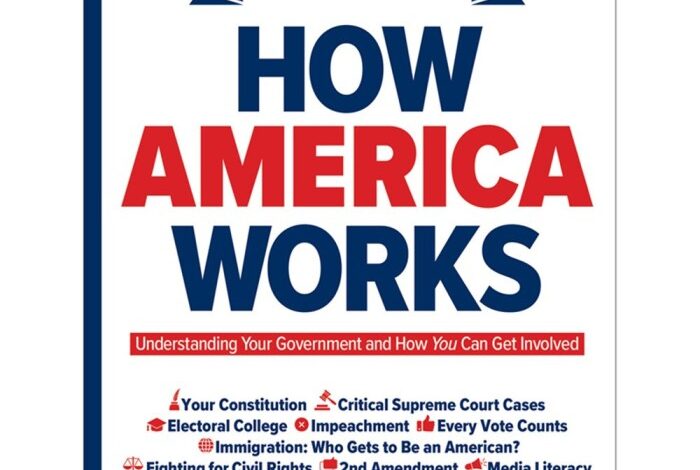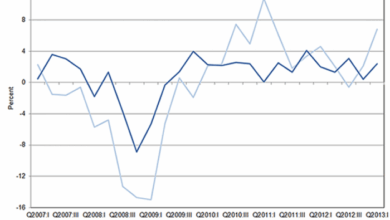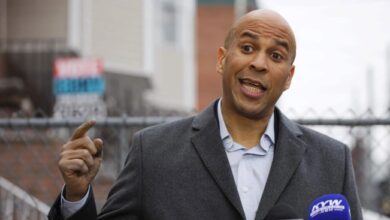
How America works today is a complex tapestry woven from the threads of politics, economics, social dynamics, law, institutions, foreign policy, media, and public discourse. This exploration delves into the intricate workings of the American system, examining its strengths, weaknesses, and the challenges it faces in the 21st century. From the structure of government to the evolution of social values, we’ll unpack the mechanisms that shape American society and consider how they interact.
The American political system, with its intricate balance of powers, will be examined, alongside the principles of its capitalist economy and the impact of government intervention. We’ll explore the diversity of American society, its major social issues, and the evolving cultural landscape. The legal system, institutions, and infrastructure will also be highlighted, alongside a discussion of America’s role in global affairs and the influence of media on public discourse.
The goal is to provide a holistic understanding of how America functions today.
The American Political System
The American political system, a complex interplay of federal, state, and local governments, is a cornerstone of American democracy. It’s a system designed to distribute power, prevent tyranny, and ensure responsiveness to the needs of the diverse population. Understanding its structure and operation is crucial for navigating the political landscape and engaging in informed civic participation.
Structure of the US Government
The US government is structured with three distinct branches: the executive, legislative, and judicial. Each branch has specific powers and responsibilities, designed to create a balance of authority and prevent any one branch from becoming too powerful. The executive branch, headed by the President, enforces laws; the legislative branch, Congress, creates laws; and the judicial branch, led by the Supreme Court, interprets laws.
This separation of powers is a fundamental principle of American governance.
Roles of the Branches
The executive branch, headed by the President, is responsible for enforcing laws passed by Congress. This includes managing the federal bureaucracy, appointing officials, and commanding the armed forces. The President’s power is not absolute, but is checked and balanced by the other branches. The legislative branch, Congress, is composed of the House of Representatives and the Senate.
Congress’s primary role is creating laws, approving budgets, and declaring war. The judicial branch, headed by the Supreme Court, interprets laws passed by Congress and ensures they align with the Constitution. The Supreme Court also settles disputes between states and the federal government.
Levels of Government
The American system of government operates on three levels: federal, state, and local. The federal government holds powers specifically delegated by the Constitution, such as regulating interstate commerce and declaring war. State governments have reserved powers, such as regulating education and marriage. Local governments, such as cities and counties, exercise powers delegated to them by the state.
This division of authority ensures a balance between national unity and local autonomy.
Interactions Between Branches
The three branches of government frequently interact and influence each other. For instance, the President can veto legislation passed by Congress. Congress can impeach and remove the President or federal judges. The judicial branch can declare laws passed by Congress or actions taken by the President unconstitutional. These interactions are vital to the system of checks and balances.
Lawmaking Process
The process of lawmaking in the US Congress is complex and often lengthy. Bills are introduced in either the House or Senate, then go through committees for review and debate. If approved, the bill is debated on the floor of the chamber and voted upon. If passed, it moves to the other chamber for similar consideration. If both chambers approve the bill in identical form, it goes to the President for signature or veto.
Checks and Balances in Practice
Checks and balances are evident in numerous instances. For example, when a President vetoes a bill passed by Congress, the legislative branch has the option to override the veto with a two-thirds vote in both the House and Senate. This prevents the executive branch from unilaterally enacting policies that might not be in the best interest of the nation.
America’s current system, with its complexities and often-conflicting priorities, is fascinating to observe. Take, for example, the Trump administration’s attempt to regulate ticket pricing, as detailed in the trump ticket price gouging executive order. While the specifics of that particular executive order highlight a specific aspect of the American market, it also underscores the ongoing tension between free markets and consumer protection, a recurring theme in how the country operates today.
The judicial branch can review laws passed by Congress and strike them down if deemed unconstitutional, limiting the power of the legislative branch.
Comparison with Other Democracies
| Feature | US | Canada | United Kingdom | Germany |
|---|---|---|---|---|
| Head of State | President | Monarch | Monarch | President |
| Legislative Structure | Bicameral (House & Senate) | Bicameral (House of Commons & Senate) | Unicameral (Parliament) | Bicameral (Bundestag & Bundesrat) |
| Executive Power | Separation of powers | Separation of powers | Fusion of powers | Separation of powers |
| Judicial System | Independent judiciary | Independent judiciary | Independent judiciary | Independent judiciary |
This table provides a basic comparison of key features between the US and other prominent democracies. Further research would provide a more in-depth analysis. Significant differences exist in the structure of the legislative branches, executive power distribution, and the roles of the head of state.
Economic Systems and Policies

The American economy, a cornerstone of the nation’s strength and global influence, operates largely within a capitalist framework. This system, characterized by private ownership of resources and the pursuit of profit, drives innovation and economic growth. However, the pursuit of profit also presents challenges, including potential income inequality and fluctuations in the market. Government intervention plays a crucial role in mitigating these challenges and ensuring a stable and equitable economy.
Fundamental Principles of the American Economy
The American economy rests on the principles of capitalism and free markets. Private individuals and corporations own the means of production, and prices are largely determined by supply and demand. This system encourages competition, innovation, and efficiency. However, this reliance on the market also necessitates a role for government intervention to address market failures and promote public welfare.
A critical aspect of this system is the belief in limited government intervention, with a focus on regulating the market rather than controlling it directly.
Economic Challenges Facing the US Today
Several significant economic challenges confront the United States. Inflation, a sustained increase in the general price level of goods and services, erodes purchasing power and can destabilize the economy. High unemployment rates, characterized by a significant portion of the workforce without jobs, also represent a major economic concern. Income inequality, a disparity in the distribution of wealth and income, poses social and economic challenges.
These issues necessitate thoughtful policy responses to ensure economic stability and prosperity for all segments of society.
Government Intervention in the Economy
Government intervention in the economy is a complex issue with a long history. Regulations, designed to protect consumers, workers, and the environment, are a vital component. Subsidies, financial assistance provided to specific industries or sectors, can stimulate economic activity. Taxes, levied on individuals and corporations, fund government programs and provide revenue for public services. The balance between government regulation and market freedom is crucial in ensuring economic stability and fairness.
Different Economic Policies
Fiscal policy, which involves government spending and taxation, and monetary policy, which involves controlling the money supply and interest rates, are the two primary instruments of government economic management. Fiscal policy impacts aggregate demand and supply through direct spending and taxation. Monetary policy, often implemented by central banks, affects interest rates and credit availability.
Impact of Economic Policies on Different Segments of Society
Economic policies have varied and often complex impacts on different segments of society. For example, tax cuts for corporations can boost economic growth but may not lead to increased wages for workers. Government investments in infrastructure projects may create jobs but also come with budget implications. Understanding these impacts is crucial for crafting policies that promote inclusive economic growth.
Historical Trends of Key Economic Indicators
| Year | GDP (in trillions USD) | Inflation Rate (%) |
|---|---|---|
| 2010 | 15.0 | 1.6 |
| 2015 | 18.0 | 0.5 |
| 2020 | 23.0 | 1.2 |
| 2023 | 26.5 | 4.5 |
The table above illustrates the historical trends of GDP and inflation in the United States. These indicators reflect the dynamism of the economy and the impact of various factors, including government policies, technological advancements, and global events. Analyzing these trends provides insights into the performance of the American economy over time. Note that these figures are simplified and do not capture all nuances.
Further research and analysis would be needed for a more complete picture.
Social and Cultural Dynamics
America’s social landscape is a vibrant tapestry woven from diverse threads of ethnicity, culture, and belief. This rich diversity, while a source of strength, also presents challenges in maintaining unity and addressing the nation’s complex social issues. The evolution of American values and beliefs, often shaped by external pressures and internal conflicts, continues to influence societal norms and political discourse.
Diversity of American Society
American society is remarkably diverse, encompassing a multitude of ethnicities, nationalities, and religious backgrounds. This diversity has enriched the nation’s culture, fostered innovation, and shaped its unique identity. However, the coexistence of these diverse groups has also led to challenges in achieving social harmony and equitable treatment. The melting pot ideal, while aiming for assimilation, has often failed to fully address the persistent realities of racial and socioeconomic disparities.
Major Social Issues and Debates
Several critical social issues dominate the American discourse. Racial justice, a persistent concern, focuses on dismantling systemic racism and promoting equitable treatment for all races. Immigration debates center on the legal and ethical considerations of welcoming newcomers, balancing national interests with humanitarian concerns, and addressing the potential impacts on the economy and society. LGBTQ+ rights remain a significant area of contention and progress, with ongoing efforts to achieve full equality and recognition.
Understanding how America operates today involves looking at a complex web of domestic and international relations. For example, South Korea’s diplomatic maneuvering with Syria’s new government, and its evolving alliances with North Korea, south korea diplomatic relations syria new government north korea allies , are factors influencing global politics and, by extension, the American approach to foreign policy.
Ultimately, the intricacies of global events like these impact the way America functions internally and on the world stage.
Evolution of American Values and Beliefs
American values and beliefs have undergone significant transformations throughout history. From the emphasis on individualism and self-reliance to growing concerns about social responsibility and equality, the nation’s ideals have evolved in response to changing societal needs and external pressures. These evolving values are reflected in public policy debates and social movements, impacting the direction of the nation.
Comparison of American Cultural Norms with Other Countries
American cultural norms, such as individualism, informality, and a focus on material success, contrast with those of other countries. For instance, collectivist cultures prioritize group harmony and interdependence, while others may place a greater emphasis on tradition and hierarchy. Understanding these cultural differences is crucial for fostering effective cross-cultural communication and cooperation in an increasingly interconnected world.
Role of Media and Social Media in Shaping Public Opinion
Media and social media platforms play a pivotal role in shaping public opinion. The proliferation of information, both accurate and misleading, through these channels significantly impacts how individuals perceive events and issues. This influence can be both constructive and destructive, leading to polarization, misinformation, and heightened emotional responses to societal challenges.
Key Social Indicators
| Indicator | Description | Data (Example – needs specific, reliable data source) |
|---|---|---|
| Crime Rates | Measures of violent and property crimes, including murder, assault, theft, and burglary. | FBI Uniform Crime Reporting (UCR) data |
| Education Levels | Percentage of population with various levels of educational attainment (high school, bachelor’s degree, etc.). | U.S. Census Bureau data |
| Poverty Rates | Percentage of the population living below the poverty line. | U.S. Census Bureau data |
| Health Outcomes | Life expectancy, infant mortality rate, and access to healthcare. | Centers for Disease Control and Prevention (CDC) data |
Note: The table above provides a framework for key social indicators. Specific data would need to be sourced from reliable governmental and research organizations.
The American Legal System
The American legal system, a cornerstone of American society, is a complex framework designed to ensure justice, protect individual rights, and resolve disputes. It’s built on a foundation of constitutional principles and common law traditions, striving to balance individual liberties with societal needs. This system is constantly evolving to address emerging challenges and adapt to changing societal values.The system, while aiming for fairness, is not without its imperfections.
Disparities in access to justice and potential biases within the system remain critical areas of concern. However, the inherent structure and processes are intended to provide a platform for fair adjudication, ensuring that individuals are treated with respect and dignity under the law.
Role of Courts and the Legal System
Courts play a crucial role in interpreting and applying the law. They adjudicate disputes, ensuring that laws are upheld and that individuals’ rights are protected. The legal system encompasses various branches and levels of courts, from local courts handling minor disputes to the Supreme Court, the ultimate arbiter of legal interpretations. This hierarchical structure allows for appeals and ensures that decisions are reviewed by higher authorities, striving for consistency and accuracy in the application of laws.
Rights and Responsibilities of Citizens
American citizens enjoy a range of fundamental rights Artikeld in the Constitution, including freedom of speech, religion, and the press. These rights are not absolute, however, and are subject to reasonable limitations to protect the rights of others and maintain order. Correspondingly, citizens have responsibilities, such as obeying laws and respecting the rights of others. This balance of rights and responsibilities is a vital aspect of a functioning democracy.
The legal system’s role is to delineate these rights and responsibilities clearly and to ensure their fair application.
Major Legal Issues Facing the Nation Today
Several significant legal issues challenge American society. Issues like gun control, immigration, and environmental protection generate heated debate and require careful consideration. Further, issues of racial justice, economic inequality, and healthcare access continue to be central to legal discourse and policy discussions. The legal system strives to address these complexities, aiming for solutions that balance competing interests and uphold constitutional principles.
Principles of Justice and Fairness
The American legal system is predicated on principles of justice and fairness. These principles emphasize due process, ensuring that individuals are afforded a fair hearing and opportunity to present their case. Impartiality of judges and juries is a critical component of this system, aiming to ensure that decisions are based on evidence and the law, rather than bias or prejudice.
Understanding how America functions today involves looking at many complex systems, from the intricate balance of political power to the ever-evolving economic landscape. It’s fascinating to compare this with the processes surrounding a new pope election, like the conclave of cardinals and the selection of candidates, following the death of Pope Francis. Learning about this unique process from this article highlights the different ways power structures operate in various parts of the world.
Ultimately, understanding these diverse systems provides a broader perspective on how governance functions globally, including the unique American approach.
These fundamental tenets are crucial for upholding public trust in the legal system.
Process of Resolving Disputes
Disputes in American society are often resolved through the legal system. This process typically involves filing a complaint, presenting evidence, and attending hearings or trials. The specifics of the process vary depending on the nature of the dispute and the jurisdiction. Alternative dispute resolution methods, such as mediation and arbitration, are also increasingly utilized to address conflicts outside of formal court proceedings.
Key Legal Precedents and Their Impact
| Legal Precedent | Impact on Society |
|---|---|
| Brown v. Board of Education (1954) | Declared state laws establishing separate public schools for black and white students to be unconstitutional, significantly advancing racial equality. |
| Miranda v. Arizona (1966) | Established the requirement that individuals be informed of their constitutional rights, including the right to remain silent, before custodial interrogation. This crucial precedent safeguards against coerced confessions. |
| Roe v. Wade (1973) | Recognized a woman’s right to an abortion, profoundly impacting reproductive rights and access to healthcare. The ongoing debate about abortion reflects the complexity and sensitivity of this issue. |
American Institutions and Infrastructure

The backbone of American society relies on the functionality and efficacy of its institutions and infrastructure. From the schools that educate future generations to the hospitals that provide vital healthcare, these elements play a crucial role in shaping the nation’s well-being and progress. The quality and accessibility of these services are key determinants of a nation’s overall prosperity.
Understanding their current state, challenges, and opportunities is essential to comprehending the challenges and progress in the American landscape.
The Role of Schools, Hospitals, and Libraries
These institutions are fundamental to a thriving society. Schools are the primary drivers of education, preparing citizens for productive lives and informed participation in democracy. Hospitals provide crucial healthcare services, ensuring the well-being of the population. Libraries act as community hubs, offering access to information, fostering lifelong learning, and serving as vital resources for diverse populations. They are not just buildings; they are essential societal structures.
The State of American Infrastructure
American infrastructure, including roads, bridges, and public transportation, faces significant challenges. Aging infrastructure often requires substantial investment for maintenance and repair. The lack of adequate funding for these projects has resulted in significant deterioration and safety concerns. This is a crucial area that needs substantial attention and investment to ensure safety, efficiency, and economic competitiveness. Examples include the condition of many bridges across the country or the frequent delays and congestion on public transit systems in many urban areas.
Challenges and Opportunities
Funding limitations and a lack of prioritization are major challenges. Balancing competing needs and prioritizing investments is a constant struggle. Opportunities lie in innovative funding models, partnerships between public and private sectors, and the use of technological advancements to improve efficiency and sustainability. The adoption of sustainable and environmentally friendly practices in infrastructure projects is a significant opportunity for the future.
Examples include the use of recycled materials in road construction or the implementation of smart traffic systems to reduce congestion.
Comparison with Other Developed Nations
Comparing the performance of American institutions with those in other developed nations reveals both strengths and weaknesses. While the US excels in certain areas like research and development, its performance in areas like universal healthcare access and infrastructure funding lags behind some of its developed counterparts. This comparison underscores the need for strategic improvements and policy adjustments. Examples include the differing approaches to public education funding and healthcare systems in countries like Canada or the UK.
Impact of Technological Advancements
Technological advancements are profoundly impacting institutions and infrastructure. Digital learning platforms are transforming education, while telemedicine is expanding healthcare access. Modern transportation systems are incorporating smart technologies for improved efficiency. This transformation is evident in the widespread adoption of online learning tools in schools, the rise of telehealth services, and the development of autonomous vehicles. Examples include the increasing use of online learning platforms in schools, the use of robotic surgery in hospitals, and the development of self-driving buses in urban areas.
Funding and Performance of American Institutions
| Institution Type | Funding Source | Performance Metrics | Challenges |
|---|---|---|---|
| Public Schools | State and local taxes, federal grants | Student achievement, graduation rates, teacher salaries | Funding disparities between states, teacher shortages, standardized testing pressures |
| Hospitals | Private insurance, government subsidies, patient fees | Patient outcomes, infection rates, wait times | Rising healthcare costs, insurance coverage gaps, staffing shortages |
| Libraries | Local taxes, state funding, private donations | Patron use, programs offered, digital resources | Decreasing funding, competing with online resources, shifting community needs |
American Foreign Policy and International Relations
The United States, a global superpower, plays a significant role in shaping international relations. Its foreign policy, influenced by a complex interplay of historical events, economic interests, and domestic political considerations, has profound consequences for the world stage. Understanding the historical context, current challenges, and the impact of global events on American society is crucial to comprehending the nation’s role in the 21st century.
Historical Context of US Foreign Policy
American foreign policy has evolved significantly since its founding. Initially focused on westward expansion and continental dominance, the nation’s role expanded after World War II. The Cold War era saw the US engaged in a global struggle against communism, shaping alliances and military strategies. The post-Cold War period brought new challenges, including the rise of new global powers, terrorism, and economic interdependence.
The historical context continues to influence contemporary policy debates.
The Role of the US in Global Affairs, How america works today
The United States’ influence on global affairs is multifaceted, encompassing diplomatic relations, economic partnerships, and military interventions. It is a leading member of international organizations, such as the United Nations and World Trade Organization, and a significant contributor to global economic and humanitarian efforts. The US also maintains a substantial military presence around the world, playing a key role in maintaining regional stability and responding to global crises.
Main Challenges and Opportunities in US Foreign Policy Today
Contemporary US foreign policy faces numerous challenges, including rising geopolitical competition from China and Russia, global economic instability, and the spread of extremist ideologies. Opportunities exist in fostering international cooperation to address shared challenges, promoting democratic values abroad, and leveraging technological advancements for diplomatic and security purposes.
Examples of Current International Relations
Current international relations are characterized by complex and often conflicting interests. Examples include the ongoing trade disputes between the US and China, the evolving relationship between the US and Russia, and the challenges of maintaining peace and stability in regions like the Middle East and Eastern Europe. These relations are further complicated by issues of global health, climate change, and cybersecurity.
Impact of Global Events on American Society
Global events, from economic crises to acts of terrorism, have a significant impact on American society. These events can influence public opinion, shape political discourse, and lead to shifts in domestic priorities. For example, the September 11th attacks led to a significant shift in national security policy and the allocation of resources. The rise of global terrorism and economic competition have also influenced domestic political debate and policy decisions.
US Foreign Policy Initiatives and Their Results (Table)
| Initiative | Description | Results (Positive/Negative/Mixed) | Examples |
|---|---|---|---|
| Marshall Plan (post-WWII) | Economic aid to rebuild war-torn Europe | Positive: Stimulated European economic recovery, strengthened US influence | Increased trade, political stability |
| NATO Membership | Collective defense alliance | Mixed: Successful in deterring aggression, but some tensions | Collective response to crises, enhanced security |
| War on Terror (post-9/11) | Military intervention against terrorist groups | Negative: Led to loss of life and instability in some regions | Afghanistan, Iraq conflicts |
American Media and Public Discourse
The American media landscape is a complex tapestry woven from various threads of information, entertainment, and opinion. It plays a crucial role in shaping public perception, influencing political discourse, and reflecting the nation’s diverse social and cultural fabric. This dynamic interplay between media and the public is a continuous process, constantly evolving with technological advancements and societal shifts.The media, in its various forms, acts as a crucial intermediary between individuals and the world around them.
It disseminates information, fosters understanding, and encourages critical engagement with issues of public importance. It also carries the responsibility of presenting diverse perspectives, ensuring balanced coverage, and avoiding the propagation of misinformation.
Role of Media in Shaping Public Opinion
Media outlets, including newspapers, television, radio, and online platforms, wield significant influence over public opinion. Their selection of stories, framing of events, and presentation of information significantly impact how audiences interpret reality. Credible reporting, coupled with rigorous fact-checking, promotes informed decision-making. Conversely, biased or sensationalized reporting can misrepresent events, leading to distorted public perceptions.
Types of Media
The American media landscape comprises a variety of channels, each with its own strengths and limitations.
- Newspapers: Historically a cornerstone of American journalism, newspapers offer in-depth reporting and analysis. Their investigative journalism has uncovered crucial information and held powerful individuals and institutions accountable. However, their traditional print format faces challenges in a digital age, and their circulation numbers have declined.
- Television: Television news has a massive reach, providing visual narratives that can significantly impact public opinion. Live coverage of events and interviews with key figures allow audiences to experience events as they unfold. However, the need for compelling visuals can sometimes overshadow in-depth analysis and lead to sensationalism.
- Radio: Radio news broadcasts continue to play a significant role in reaching diverse audiences, especially in local communities. The accessibility of radio and its ability to deliver information in a concise format are key strengths. However, radio’s reliance on concise summaries can limit the depth of coverage.
- Internet and Digital Media: The internet has revolutionized the media landscape. Online news outlets and social media platforms offer unprecedented access to information, facilitating citizen journalism and the sharing of diverse perspectives. However, the proliferation of misinformation and the lack of editorial oversight on some platforms pose significant challenges.
Influence on Public Discourse
The media plays a vital role in shaping the national conversation. It frames debates, highlights key issues, and often sets the agenda for political discussion. The choice of which stories to cover, how they are presented, and the perspectives highlighted in coverage significantly impacts public discourse. For example, a media outlet’s focus on a particular economic policy can lead to a national conversation centered around that issue.
Challenges Facing American Media Today
The American media faces numerous challenges in the current environment.
- Misinformation and Disinformation: The spread of false or misleading information online poses a significant threat to informed public discourse. The rapid dissemination of unsubstantiated claims through social media often outpaces the ability of traditional media outlets to debunk them.
- Financial Sustainability: Many traditional media outlets face financial pressures as advertising revenue shifts online. This can lead to reduced staff, less in-depth reporting, and a reliance on shorter, less complex stories.
- Political Polarization: Political polarization in the US has led to a greater division in media consumption patterns. Individuals tend to gravitate toward media outlets that align with their political viewpoints, limiting exposure to diverse perspectives and potentially exacerbating existing divides.
Media Portrayal of Social Groups
The media’s representation of different social groups is a complex and multifaceted issue. Stereotypes, biases, and underrepresentation are potential pitfalls. A critical analysis of media coverage is essential to identify and address these concerns.
- Racial Representation: The representation of different racial groups in the media varies considerably. Media portrayals can reinforce stereotypes or, conversely, provide positive and accurate portrayals of individuals and communities.
- Gender Representation: Media coverage of gender roles and identities is also a significant concern. The depiction of women and gender minorities can reflect traditional stereotypes or showcase diverse perspectives.
- Socioeconomic Representation: The media’s portrayal of different socioeconomic groups can perpetuate class-based biases. Media narratives often focus on affluent or marginalized communities, neglecting the experiences of those in the middle class.
Analysis of Media Impact
| Type of Media | Impact on Public Opinion | Strengths | Weaknesses |
|---|---|---|---|
| Newspapers | In-depth analysis, investigative journalism | Credibility, historical record | Declining readership, limited reach |
| Television | Visual storytelling, live coverage | Broad reach, immediate impact | Potential for sensationalism, limited depth |
| Radio | Accessible, concise information | Broad reach, particularly in local communities | Limited visual elements, potential for bias |
| Internet and Digital Media | Unprecedented access to information, diverse perspectives | Accessibility, speed of dissemination | Misinformation, lack of editorial oversight |
Final Review: How America Works Today
In conclusion, understanding how America works today requires a multifaceted approach, acknowledging the interplay of its political, economic, social, and legal systems. This exploration has highlighted the complexity of the American experience, showcasing the challenges and opportunities facing the nation. The interplay between these various forces shapes the current reality and offers insights into the future trajectory of the United States.





